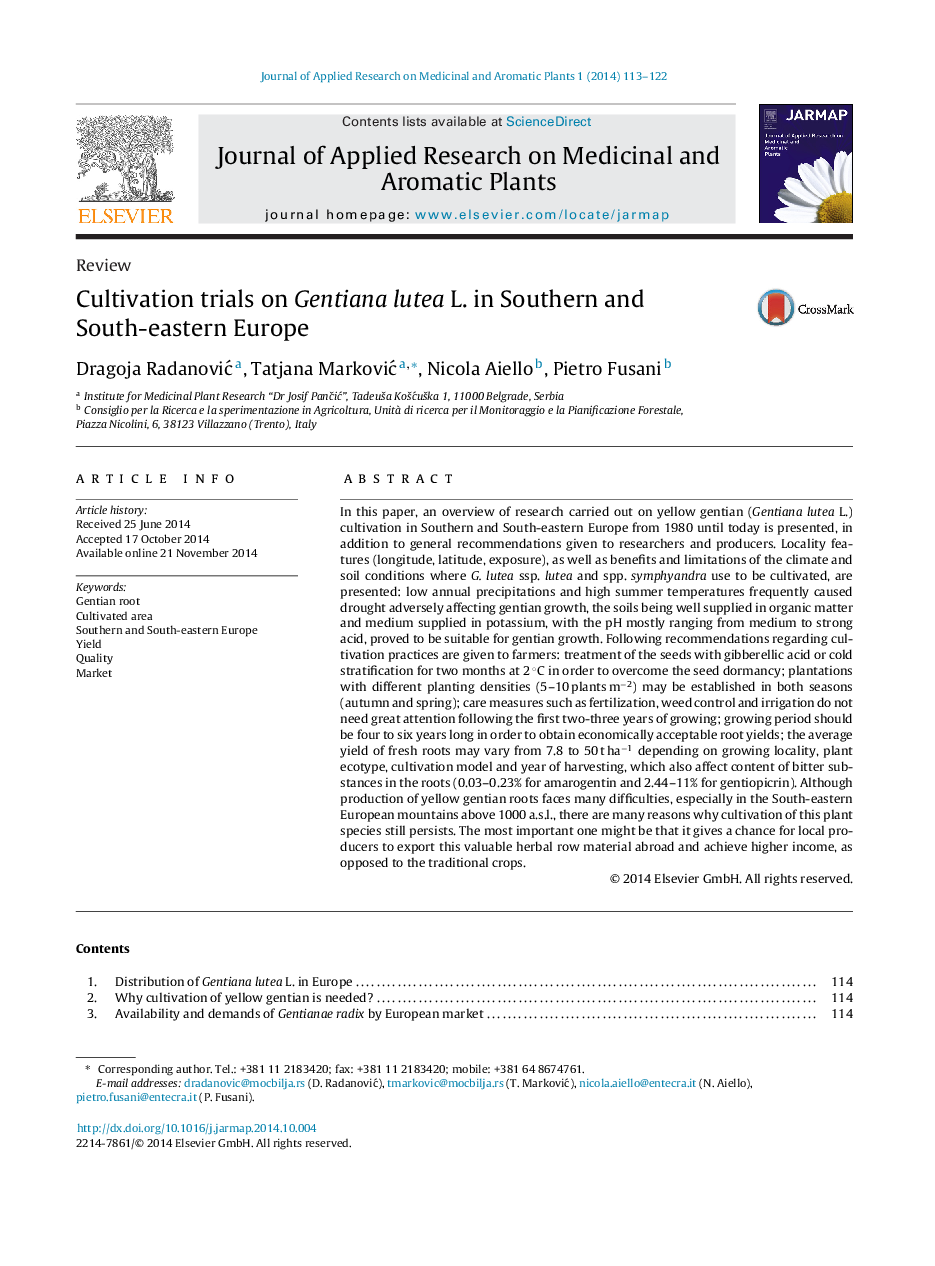| Article ID | Journal | Published Year | Pages | File Type |
|---|---|---|---|---|
| 3099180 | Journal of Applied Research on Medicinal and Aromatic Plants | 2014 | 10 Pages |
In this paper, an overview of research carried out on yellow gentian (Gentiana lutea L.) cultivation in Southern and South-eastern Europe from 1980 until today is presented, in addition to general recommendations given to researchers and producers. Locality features (longitude, latitude, exposure), as well as benefits and limitations of the climate and soil conditions where G. lutea ssp. lutea and spp. symphyandra use to be cultivated, are presented: low annual precipitations and high summer temperatures frequently caused drought adversely affecting gentian growth, the soils being well supplied in organic matter and medium supplied in potassium, with the pH mostly ranging from medium to strong acid, proved to be suitable for gentian growth. Following recommendations regarding cultivation practices are given to farmers: treatment of the seeds with gibberellic acid or cold stratification for two months at 2 °C in order to overcome the seed dormancy; plantations with different planting densities (5–10 plants m−2) may be established in both seasons (autumn and spring); care measures such as fertilization, weed control and irrigation do not need great attention following the first two-three years of growing; growing period should be four to six years long in order to obtain economically acceptable root yields; the average yield of fresh roots may vary from 7.8 to 50 t ha−1 depending on growing locality, plant ecotype, cultivation model and year of harvesting, which also affect content of bitter substances in the roots (0.03–0.23% for amarogentin and 2.44–11% for gentiopicrin). Although production of yellow gentian roots faces many difficulties, especially in the South-eastern European mountains above 1000 a.s.l., there are many reasons why cultivation of this plant species still persists. The most important one might be that it gives a chance for local producers to export this valuable herbal row material abroad and achieve higher income, as opposed to the traditional crops.
Graphical abstractFigure optionsDownload full-size imageDownload as PowerPoint slide
